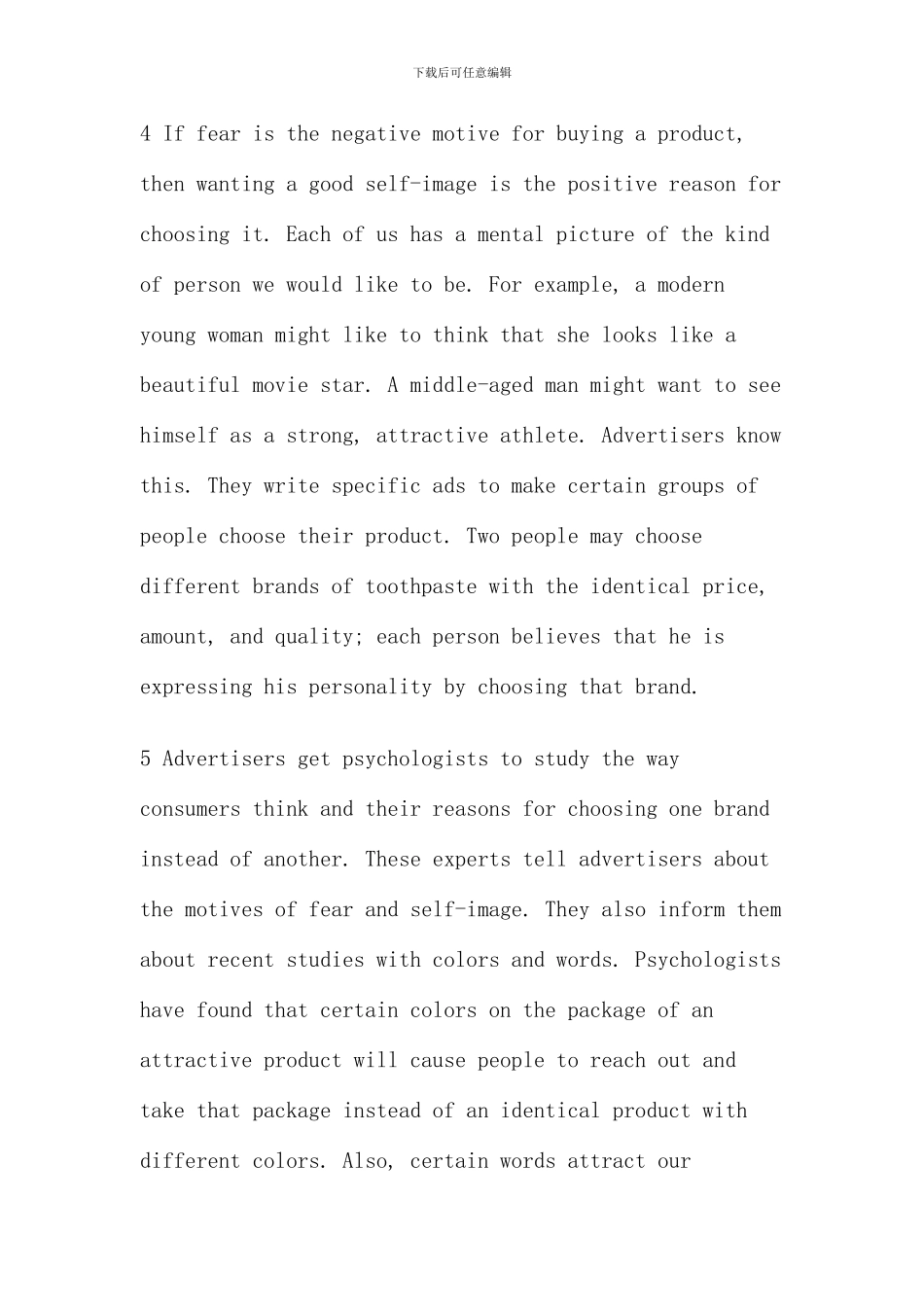下载后可任意编辑Advertising: The Selling of a Product1 A consumer walks into a store. He stands in front of hundreds of boxes of laundry detergent. He chooses one brand, pays for it, and leaves. Why does he pick that specific kind of soap? Is it truly better than the others? Probably not. These days, many products are nearly identical to each other in quality and price. If products are almost the same, what makes consumers buy one brand instead of another? Although we might not like to admit it, commercials on television and advertisements in magazines probably influence us much more than we think they do.2 Advertising informs consumers about new products available on the market. It gives us information about everything from shampoo to toothpaste to computers and cars. But there is one serious problem with this. The "information" is actually very often "misinformation." It tells us the products' benefits but hides their disadvantages. Advertising not only leads us to buy things that we don't need and can't afford, but it also 下载后可任意编辑confuses our sense of reality. "Zoom toothpaste prevents cavities and gives you white teeth!" the advertisement tells us. But it doesn't tell us the complete truth: that a healthy diet and a good toothbrush will have the same effect.3 Advertisers use many methods to get us to buy their products. One of their most successful methods is to make us feel dissatisfied with ourselves and our imperfect lives. Advertisements show us who we are not and what we do not have. Our teeth aren't white enough. Our hair isn't shiny enough. Our clothes aren't clean enough. Advertisements make us afraid that people won't like us if we don't use the advertised products...


